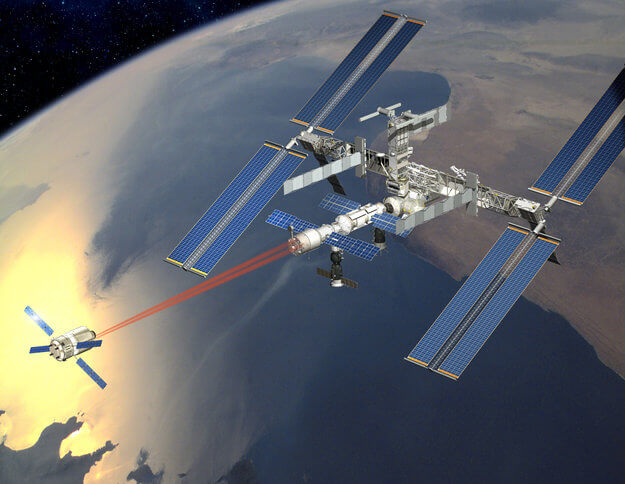The fourth automatic cargo spacecraft of the European Space Agency, Albert Einstein, was launched into orbit on Tuesday from the space center in Kourou, French Guiana. The spacecraft will perform a series of maneuvers and dock at the station on June 15

An Ariane 5 rocket operated by Ariane Space took off on June 6 at 21:52 GMT (June 7 00:52 Israel time) and lifted ATV-4 into the planned circular parking orbit at an altitude of 260 kilometers, 64 minutes later. The spacecraft deployed its four solar wings used to generate electricity as well as the antenna.
The spacecraft is monitored by the ATV control center operated jointly by the European Space Agency and the French space agency CNES in Toulouse. It completed the launch and first orbital phase in six hours and is scheduled to automatically dock with the International Space Station on June 15.
The spacecraft, named after Albert Einstein, weighs 20,190 kg and is the heaviest spacecraft ever launched by Ariane, as it breaks the record of its predecessor - Eduardo Amaldibi by about 150 kg. The spacecraft, which will be used for supplies and to assist in changing the orbit of the space lander, is the largest and most sophisticated of the service spacecraft that arrived at the space station.
"With another successful launch of ATV and a new record in launch capacity, European industry has demonstrated its ability to produce unique spacecraft and provide the European Space Agency with a key role among its partners on the International Space Station" says Jean-Jacques Dordin, CEO of the European Space Agency.
"This adventure is still in progress. ATV4 has already been launched but ATV-5 is on the way and the technologies developed for ATV will survive beyond these spacecraft and ensure new programs such as the service modules that the European Space Agency is developing for the Orion multi-purpose spacecraft for NASA.
"From ATV to Orion, the European Space Agency is building the capacity that will provide Europe with the opportunity to be an important partner in international space missions in the future" says Thomas Reiter, director of the European Space Agency's manned space programs and a former astronaut who spent time on the International Space Station. "Today we support long-term settlement and scientific research in low orbit. Tomorrow we will be able to take this specialization beyond Earth's orbit together with our partners."
Albert Einstein brings a record cargo of 2,480 kg, including 620 kg of "last minute" items that were installed on her when she was already on top of the Harian rocket less than two weeks before the launch. The cargo, which is stored in the compressed part of the spaceship, is also the most diverse ever, containing over 1,400 items. In addition, the entire cargo is 2,580 kg of fuel materials for changing the route of the station and another 800 kg to fill the fuel tank of the Zabzada component at the station. Also in the cargo is 570 kg of drinking water and 100 kg of gases (two tanks pure oxygen and one of air) to the relevant containers at the station.
The ATV spacecraft were developed for the European Space Agency by European industry with Astrium being the prime contractor for the supply of supplies and fuel under an agreement with NASA to support Europe's share of the station's operating costs. It also contains precise navigation systems, flight software with high redundancy capabilities and autonomous systems for self-monitoring and collision avoidance with independent power supply, control and propulsion capabilities. No other spacecraft arriving at the station demonstrates this level of independent control.
Albert Einstein is the fourth of five ATV spacecraft. It will be docked in the Zavezda component of the station for 4 months during which it will provide the astronauts with additional storage volume and a quiet area for rest. It also allows the station's maneuverability to be strengthened and its orbit to be raised to combat the natural erosion of the orbit and if required, it could enable the station to be steered out of the way of dangerous space debris fragments. At the end of the mission it will be filled with trash and on October 28 it will make a controlled and safe landing in the Pacific Ocean.
The latest ATV, George Lamitra is in preparation for a 2014 launch.

One response
Georges Lemaitre, not Georges Lamitre.